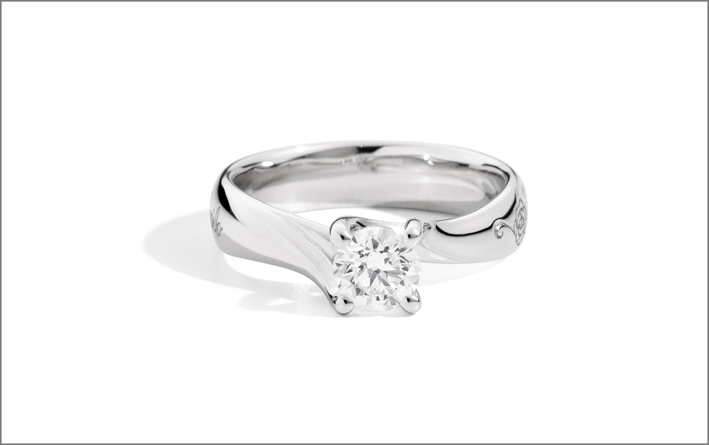Here are 6 things to ask your jeweler before buying jewelry. You will surprise him ♦ ︎
Do you need to buy a jewel to give as a gift? For example, a ring with the classic diamond, or with another precious stone? Are you worried? Of course, you can ask your jeweler for advice. But have you ever met a farmer who doesn’t say his pears are the best? In short, it is obvious that a jeweler does not underline the possible defects of a jewel, but he tends to highlight its merits. So, if you have yet to buy jewelry with an expensive stone, read this article first: it will advise you what to ask for when you are in jewelry.
Unfortunately it happens, in fact, that in good or bad faith, misunderstandings, wrong choices, or even scams can occur even in jewelry.

Most jewelers will not try to cheat you, because they know that guaranteeing transparency and quality also means winning over a customer, who will come back to him. But, unfortunately, in rare cases the opposite happens. Also because the jeweler starts from an assumption: you don’t understand anything about jewels and he can tell you what he wants without fear. And if you don’t usually read what we write on gioiellis.com you could be right.
1 Is the price right?
Let’s start with the price: small diamonds, or small precious stones such as rubies, sapphires and emeralds, under 1,000 euros or dollars are very rarely of high quality. And that’s precisely why they don’t cost much. Of course, who will notice if a small diamond is classified as color E or F? Virtually none. However, asking the jeweler for the certificate certifying the classification of the stone can make it clear to the jeweler that you are not exactly inexperienced. Diamonds, in particular, must have a certificate that guarantees their weight and quality. That’s a good place to start. Of course, first read this article which explains what is important to judge a diamond.

2 Beware of diamonds
So, if you have read our quick guide on diamonds you will also know what to observe. For example, any inclusions in the stone, or the color. Don’t be afraid to ask for a lens to be able to better observe the jewel, of course if it is a piece that has a certain price. A tip: in the case of a diamond ring, the defects are usually hidden at the bottom, for example where the prongs that hold the stone are located.

3 The hidden part
Looking where you don’t usually look is the third important thing. Look carefully at the lower part, the less visible part of a jewel, not only in the case of a ring, but also of a necklace or bracelet. For these two types of jewelry, for example, it is good to carefully check the closure system: it must be sturdy, but elegant, to allow you to fasten or unfasten the jewel with ease, but without the fear of it accidentally opening. In short, the quality of a jewel must be impeccable even in the invisible parts.

4 Look for the numbers
Another aspect to check: the engraving (punching) that identifies the type of metal used, usually expressed in thousandths. For example, 999 is used for pure silver, while 925S stands for sterling silver, that is 92.5% pure, while the remaining 7.5% is copper. Plat or Pt is instead the acronym that identifies platinum: also here 999 means that the metal is pure. Also for gold, pay attention to the numbers: for example, 750 means it is 18-karat gold, 585 means 14-karat gold, 375 9-karat gold, the least precious alloy of all. This is also important because it indicates that the jewel is composed of other metals, for example nickel (for vintage jewelry), which can cause allergies.

5 The color trick
To improve the appearance of the jewel, manufacturers use many tricks (usually legitimate). One of them is to associate a colored metal with a stone of a similar color. For example, a rose gold ring will make the color stand out more than a simple rose quartz. A brown diamond, which is the least valuable type, may appear more lemon-colored, therefore more expensive, if it is set in a yellow gold ring. So, pay attention to the combinations. Another trick to making jewelry more desirable is to combine different stones or materials in layers. For example, increase the volume of a cabochon by inserting a layer of mother-of-pearl or a less precious gem under the stone. It can be done legitimately, but it is correct that it is communicated to those who buy the jewel.

6 Prongs or bezel?
For a ring it is easier that the stones set (ie surrounded by a metal band that hides the edge and the lower part) can hide some defects. On the contrary, a beautiful stone is usually mounted keeping every part of it in view as much as possible, even the lower one, as in the case of solitaire rings set whit prongs. This is not a general rule, but it is good to know.












